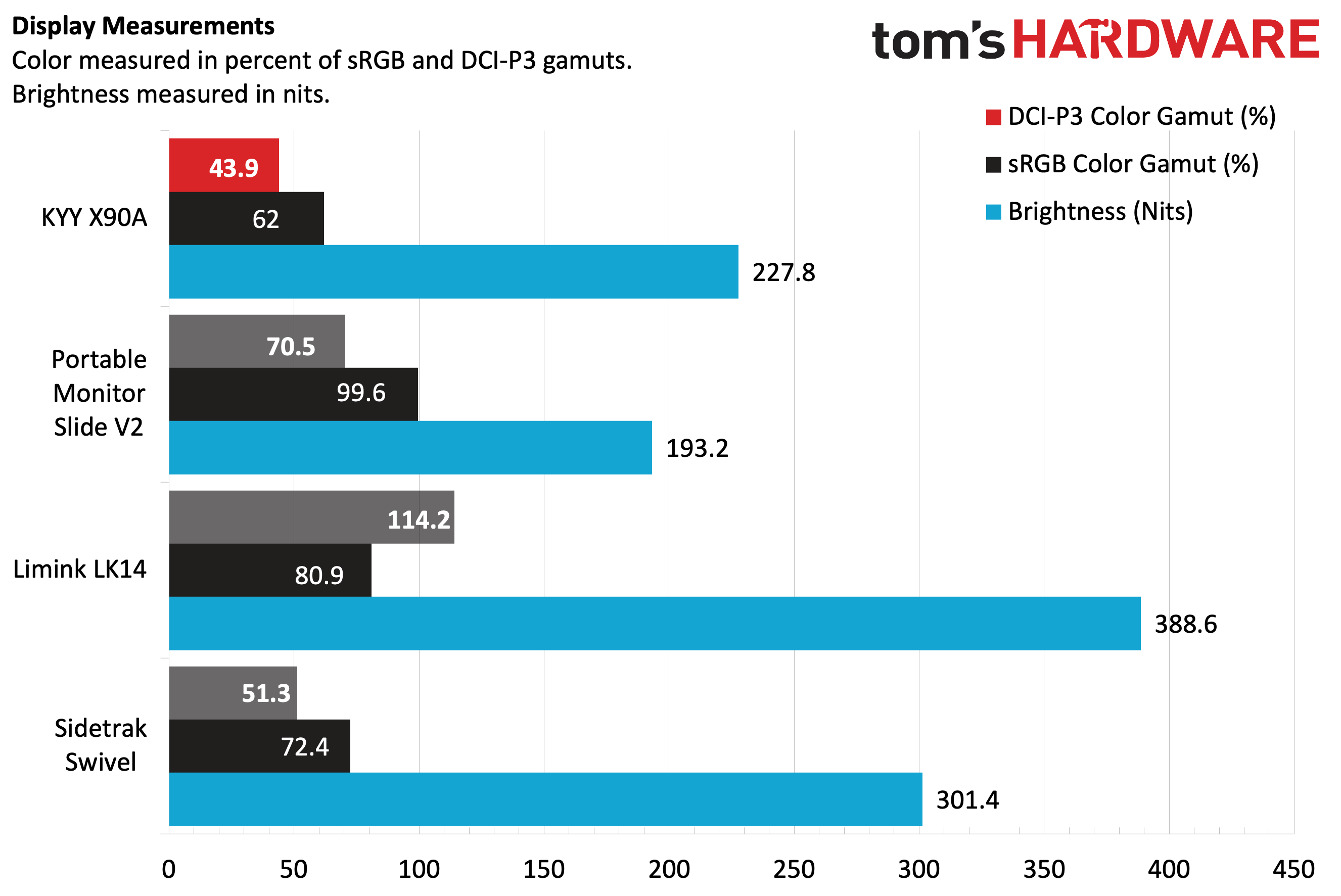Tom's Hardware Verdict
KYY plays up the value angle with an attractive price for the X90A, but it needs higher-quality panels.
Pros
- +
Solid aluminum chassis
- +
Versatile operating modes
- +
Relatively affordable for a dual-display portable monitor
Cons
- -
OSD controls are awkwardly positioned
- -
No HDMI connectivity
- -
Average color performance and brightness
Why you can trust Tom's Hardware
KYY is a brand we've covered in the past, as we reviewed the company's 15.6-inch K3-3 with a 4K (3840 x 2160) panel. If one portable display isn't enough, KYY is back in the saddle with the X90A. KYY describes this as a “Triple Portable Monitor,” where the two displays of the X90A flank your laptop's display.
In this instance, KYY features dual 14-inch, 1080p IPS displays, each of which can rotate from 0 to 210 degrees. The X90A features an integrated kickstand that can tilt the displays at a maximum 90-degree angle.
With a 60Hz refresh rate, KYY isn't targeting gamers, but it is undoubtedly an ideal productivity booster for general consumers. And with a price tag of around $400, it's one of the cheapest dual-screen monitors available, albeit one that doesn't quite reach the status as one of the best portable monitors.
Design of the KYY X90A Triple Portable Monitor
The X90A features a central spine with an integrated kickstand that supports various operating modes. Extended mode that will likely be most useful, which has the center spine backed up against the laptop lid, with the two displays sticking out from the side.
There's also a portrait mode, where you can vertically orient one of the displays. In Presentation mode, both screens flip backward so that you can share your screens with someone situated in front of you.
The primary material used in its sturdy aluminum (including the kickstand) with no hints of creaking or warping. It's a solid unit. The build quality reminds me a lot of the Limink LK14, which also uses aluminum for its primary chassis. Most portable monitors use a primarily plastic construction to hit lower price points, so we appreciate KYY going with a more premium look and feel.


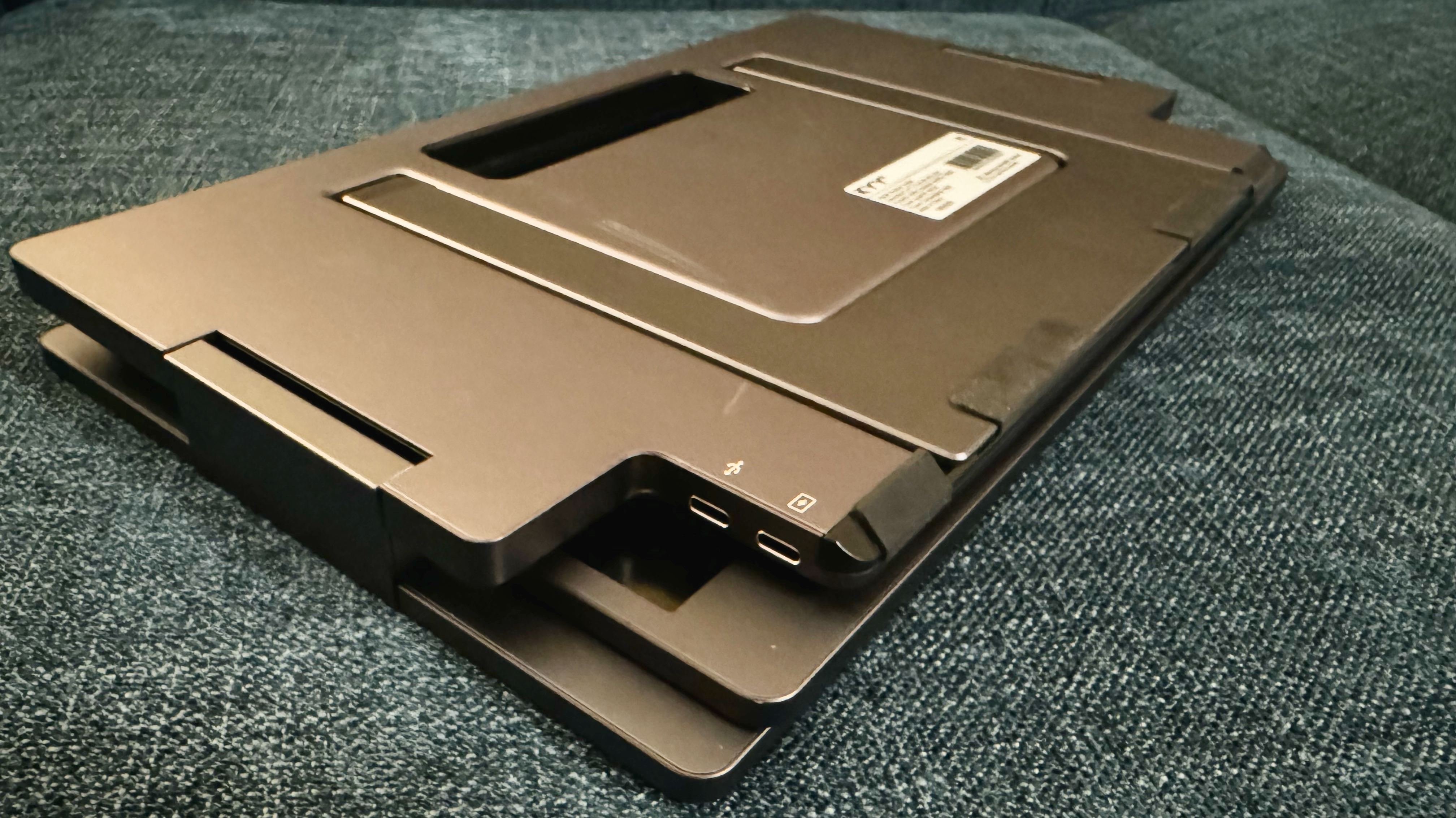
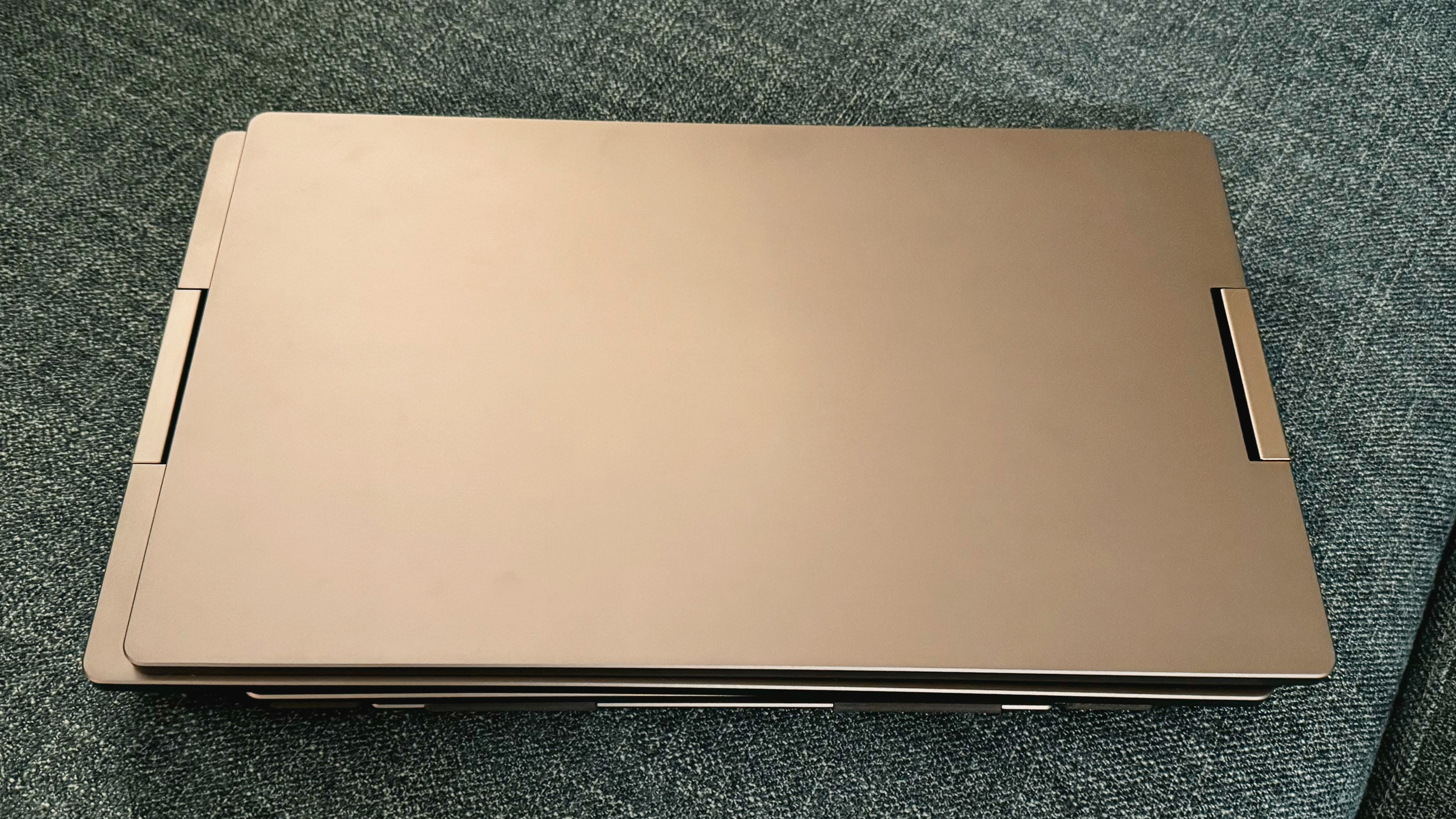
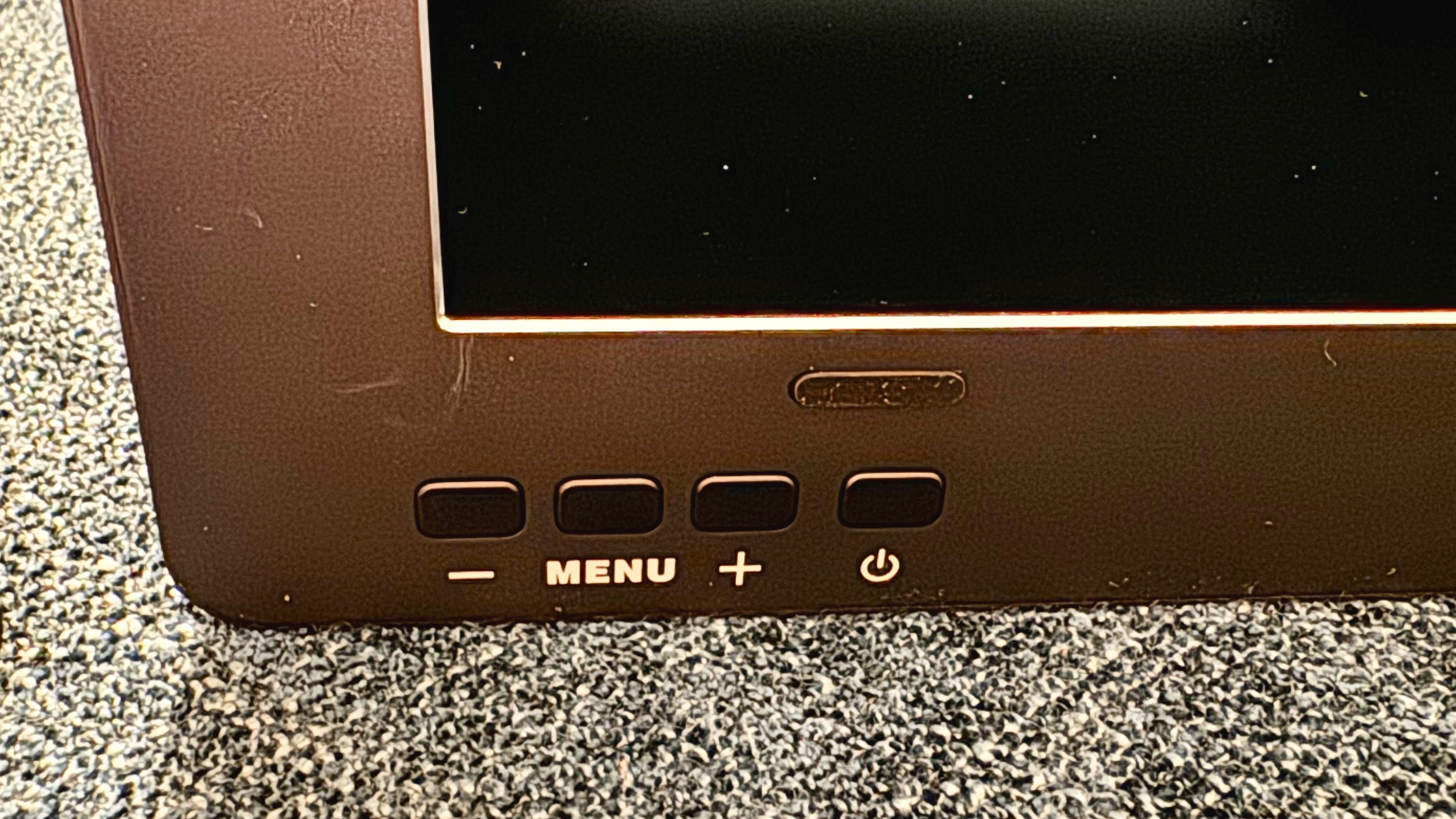
KYY says that the 3.2-pound X90A can accommodate laptops with displays measuring 12 to 16 inches, and thanks to the double-hinge design, I used the X90A with a 16-inch Acer Swift Edge 16 laptop.
Get Tom's Hardware's best news and in-depth reviews, straight to your inbox.
Given that there are two separate displays on the X90A, one set of controls exists for each. The left display has four buttons: Power, Menu, Plus and Minus, while the right display only has the latter three. These separate controls allow independent configuration of the display settings for people who want to use each screen for a separate task. For example, you might want to apply different settings for viewing a movie on the left display while working on a spreadsheet on the right display.
KYY Triple Portable Monitor Specifications
| Panel Type / Backlight | IPS / WLED |
| Screen Size / Aspect Ratio | 14 inches / 16:9 (2) |
| Max Resolution & Refresh Rate | 1920 x 1080 @ 60Hz (2) |
| Max Brightness | 300 nits |
| Contrast Ratio | 1,000:1 |
| Screen Coating | Matte/Anti-Reflective |
| Ports | 2x USB-C (DisplayPort 1.2 Alt Mode) |
| Speakers | No |
| Weight | 3.2 pounds |
Connecting the KYY X90A Triple Portable Monitor
Interestingly, the X90A doesn’t feature an HDMI port, which most portable monitors have. Instead, it only has two USB-C ports. The bottom USB-C port is for power (if your laptop can’t provide the necessary power for the X90A), while the top USB-C port is for connecting to your computer.
While the USB-C requirement isn’t much of a concern for modern laptops, it would have been nice to see an HDMI port so it could work with Raspberry Pi boards, consoles and older computers. . You also won’t find a 3.5mm headphone jack or integrated headphones, as seen on other portable monitors in this price class.
I plugged the X90A into a free USB-C port on an Acer Swift Edge 16 ultraportable laptop, and both screens lit up without needing additional drivers.
My home office setup features dual 27-inch 4K monitors mounted side-by-side. So, I felt right at home with the extra displays flanking the Swift Edge 16, providing two 14-inch Full HD (1920 x 1080) panels to augment the laptop's primary 16-inch 3200 x 2000 display in Extended mode.


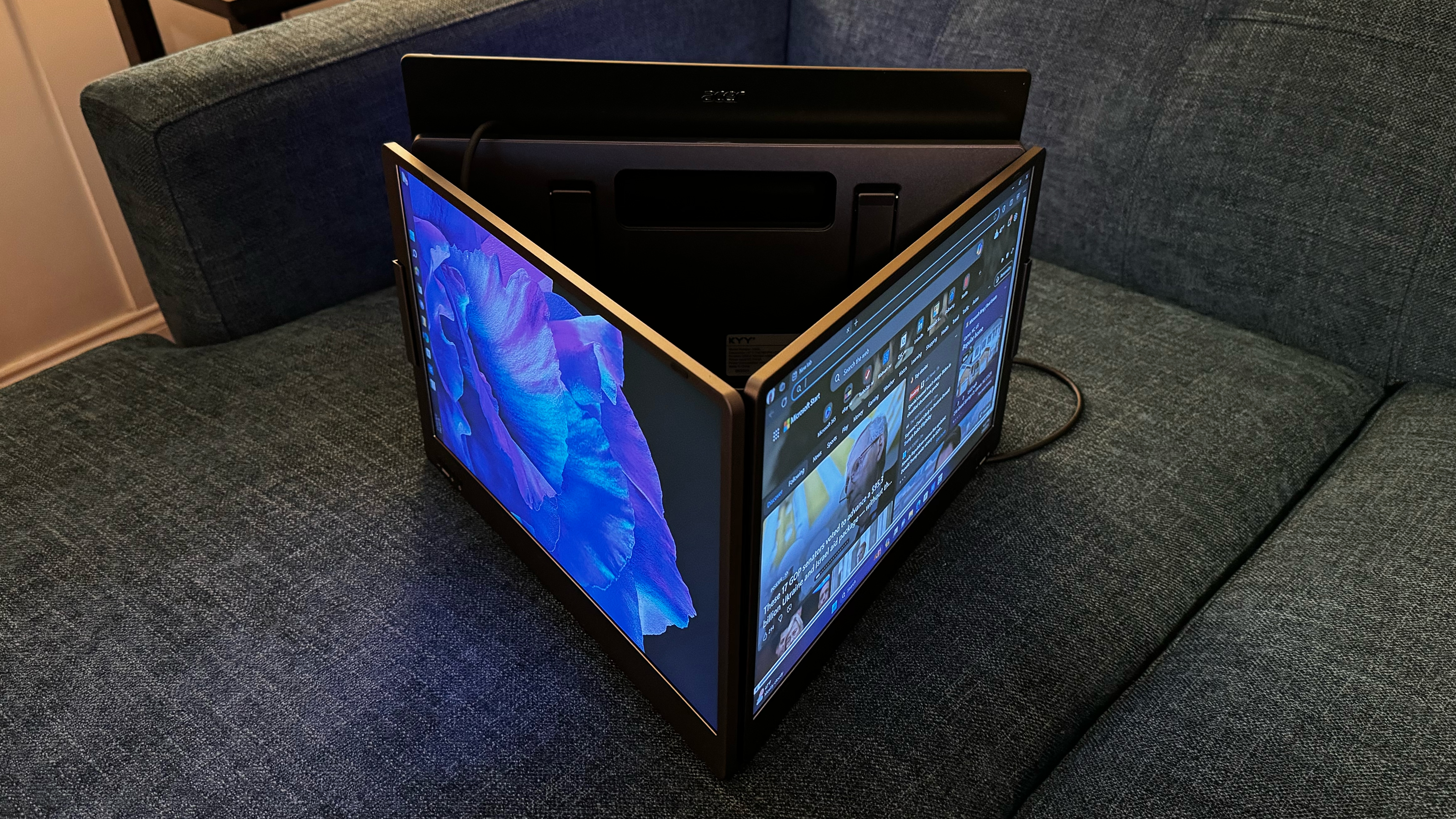
Portrait mode involves folding/stowing one of the displays and using the central spine as a hinged base for the remaining display. You can, of course, use Portrait mode on either side of the laptop. Presentation mode involves folding both displays backward until they come to a point. That way, two people sitting in front of your laptop can view content mirrored from your laptop’s display. Finally, there is the Second Screen mode. This mode is similar to the Extended mode, except one of the displays is stowed. This mode might be helpful if you have limited space to accommodate both displays in Extended mode.
I used the X90A almost exclusively in Presentation mode, with the monitor's base propped at a 90-degree angle. However, you can use the built-in kickstand to recline the whole apparatus backward to match the angle of your laptop lid.
OSD on the KYY X90A Triple Portable Monitor
As previously mentioned, the X90A has separate controls for each display, meaning each has its own on-screen display (OSD). The OSD is basic, with controls for color, brightness, contrast, temperature, and sharpness. There are also options to adjust the vertical/horizontal position of the OSD overlay and the timeout period for the OSD before it disappears.
Unfortunately, the positioning of the OSD controls makes them hard to use. They are placed close to the hinges of the X90A, which positioned them in a crook behind the Swift Edge 16’s display. I needed to place a hand behind the display and use my other hand to press the buttons to navigate the OSD (otherwise, pressing the OSD buttons without having an opposing force would cause the X90A to move on my desk). I would have preferred to see the OSD controls move to the outer edges of the displays for easier access.
Image quality on the KYY X90A Triple Portable Monitor
The X90A is a dual-screen IPS monitor, with each display measuring 14 inches across with a Full HD (1920 x 1080) resolution. KYY claims a maximum brightness of 300 nits, a contrast ratio of 1,000:1, and a 60Hz refresh rate.
Identical 14-inch IPS panels are used, so the scores you see charted below are indicative of both. No matter which display mode we used, and there are several (Default, Game, Movie, Photo, Vivid), color was just average for the X90A.
We measured 62 percent coverage of sRGB and just 43.9 percent coverage of DCI-P3 using the Default settings. According to our colorimeter, all the other picture modes were within one or two points of the Default mode. The X90A also scored lower than even the Sidetrak Swivel, which reached new low points for portable monitors in our previous lab tests.
In real-world testing, the colors on the display were muted, which the matte display coating made even more readily apparent. Greens and reds were dull and lifeless when I watched the Super Mario Bros. Movie (which is an extremely vibrant film rich in colors).
The lack of vibrancy in the colors was even more noticeable compared to the 16-inch OLED display for the Swift Edge 16, which was sandwiched between the two displays of the X90A. Moving the Super Mario Bros. Movie from the Swift Edge 16’s native display to either of the two X90A displays immediately impacted the image quality.
Of course, it’s not entirely fair to compare an IPS display to OLED concerning colors and contrast, but it is a scenario that many people will likely run into when using the X90A.
That said, the X90A proved more than capable of handling everyday productivity tasks without issue. The color performance didn’t mar my experience when using multiple windows of Microsoft Edge, Word, and Excel and apps like Slack and Gimp.
KYY claims that the X90A can hit a maximum of 300 nits, but our light meter showed that the monitor comes up well short. It averaged 228 nits in the Default mode, while the highest we ever saw was 248.6 nits in Game mode. This brightness shortfall wasn’t an issue in my home office, but I wished for extra headroom when using the X90A outside.
Bottom Line
KYY has made a valiant effort with the X90A Triple Portable Monitor. It has solid build quality reminiscent of the Limink LK14, which we rated very highly. The sturdy kickstand and double-hinged mechanism for the displays offer various operating modes that can be useful to laptop users. Although I gravitated toward the Extended mode, Portrait mode could be useful for document editing.
However, there are quite a few “misses” here that prevent this from being one of the best portable monitors, like the lack of HDMI connectivity and the awkwardly placed OSD controls, which makes navigating a chore. In addition, the X90A comes up short on the manufacturer’s claim of maximum brightness, while its color performance was at the back of the pack.
But the question remains: can these tradeoffs be overlooked given its price point? If you’re coming from a purely cost perspective, the X90A is a good buy – even with its demerits. However, the Limink LK14 Triple Portable Monitor sells for $499 at Amazon. The LK14 also comes with higher-resolution IPS panels that are brighter and offer more color. I think I’d part with the extra $90 and opt for the LK14 without a second thought.
MORE: Best Portable Monitors
MORE: Best Budget 4K Monitors
MORE: Best Computer Monitors

Brandon Hill is a senior editor at Tom's Hardware. He has written about PC and Mac tech since the late 1990s with bylines at AnandTech, DailyTech, and Hot Hardware. When he is not consuming copious amounts of tech news, he can be found enjoying the NC mountains or the beach with his wife and two sons.


